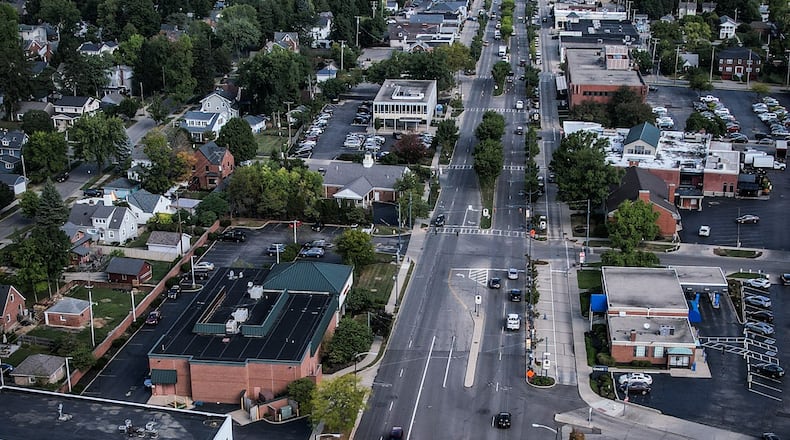Credit: JIM NOELKER
Credit: JIM NOELKER
Oakwood Vice Mayor Steve Byington called the traffic lights “a critical component of the city’s transportation infrastructure.”
City documents say traffic signals must be upgraded from time to time “when various parts of the signal system infrastructure approach the end of their useful life.” Traffic signal replacement can be very expensive. A recent proposal to replace lights at one intersection in Kettering came in over $340,000.
Oakwood has contracted with Crawford, Murphy & Tilly (CMT) of Columbus to provide a plan that would include the estimated cost and the duration of the proposal, Klopsch said.
City records show the goal is to create a plan that “maximizes the opportunity to leverage federal and state grant dollars to assist in what will be a multimillion-dollar endeavor.”
Oakwood will pay CMT $133,446 for the master plan, which is expected to be completed by Jan. 31, 2023, city records show.
Maintaining the traffic signal system on Ohio 48 “is not only important to Oakwood, it is very important to the region,” Klopsch said in an email. “It is critically important for the safety of motorists, pedestrians, cyclists … that the traffic signal system is continuously maintained and is functioning properly,” he added.
Ohio 48 in Oakwood averages about 15,000 vehicles a day, most of which are passing through the city, Klopsch said.
The average number of vehicles using the road daily ranges from about 14,700 at Stewart Street in Dayton to more than 41,500 at Interstate 675 in Centerville, Ohio Department of Transportation records show.
Oakwood documents state CMT’s work will include the following goals:
•Evaluate curb ramp compliance with current ADA guidelines, a typical requirement if federal funding is used for construction.
•Prepare a safety overview of the city to identify opportunities that may be eligible for ODOT safety funding.
•Develop a construction cost estimate of upgrades that meet city criteria related to coordination, detection, and accessible pedestrian facilities.
•Develop a plan to be used for capital planning by the city and for a funding strategy.
•Prepare a Community Multiscale Air Quality application due in October to pursue federal funding for traffic signal upgrades.
About the Author


